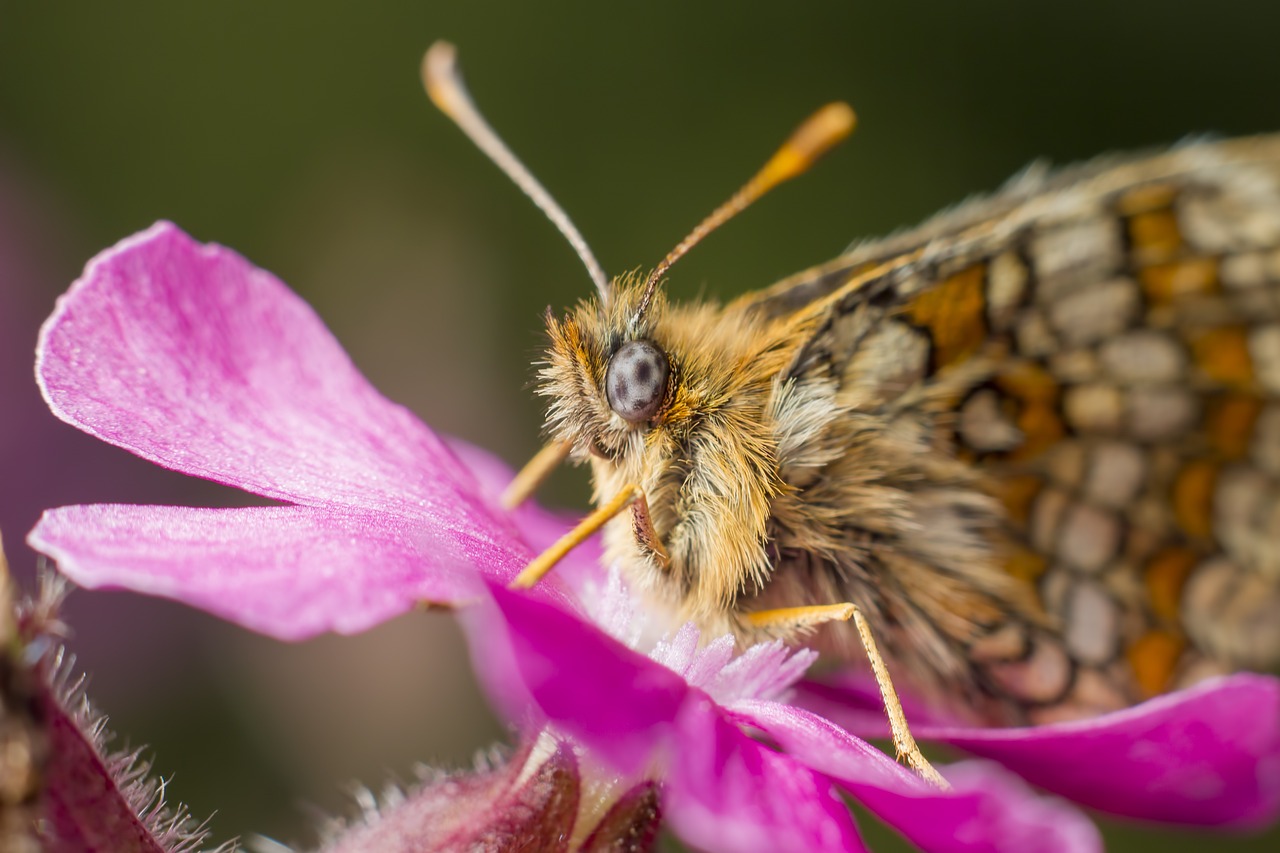The Glanville Fritillary (Melitaea cinxia) is a striking butterfly species belonging to the family Nymphalidae. Here’s a detailed description:
- Appearance: The Glanville Fritillary is a medium-sized butterfly with a wingspan ranging from 35 to 45 millimeters. Its wings feature a distinctive pattern of orange, black, and white markings. The upper side of the wings displays a combination of orange and black patches, often arranged in a mosaic-like pattern. The undersides of the wings are lighter in color, with intricate black markings and a row of distinctive silver spots along the wing margins.
- Habitat: This butterfly species is typically found in open habitats such as meadows, grasslands, and coastal dunes. It has a preference for areas with abundant nectar-rich flowers and suitable larval host plants, which include various species of violets (Viola spp.).
- Range: The Glanville Fritillary is distributed across parts of Europe, including the British Isles, Scandinavia, Central Europe, and extending eastward into Russia and parts of Asia. Within its range, it may exhibit localized populations depending on habitat availability and environmental conditions.
- Flight Period: The flight period of the Glanville Fritillary varies depending on the location and climatic conditions. In temperate regions, adults typically emerge in late spring or early summer and may have multiple generations throughout the year. They are active during the daytime and can often be observed feeding on flowers or basking in sunny spots.
- Life Cycle: Like other butterflies, the Glanville Fritillary undergoes a complete metamorphosis, progressing through egg, larva (caterpillar), pupa (chrysalis), and adult stages. The larvae feed exclusively on the leaves of violet plants, while the adults primarily feed on flower nectar.
- Conservation: In some regions, the Glanville Fritillary may face threats due to habitat loss, fragmentation, and changes in land use practices. Conservation efforts may include habitat restoration, management of key plant species, and monitoring of butterfly populations to assess their status and trends.
The Glanville Fritillary is not only admired for its beauty but also serves as an important indicator species for the health of grassland ecosystems. Efforts to protect and conserve its habitats contribute to the preservation of biodiversity and ecosystem balance.
Views: 11
Subscribe to the newsletter:
